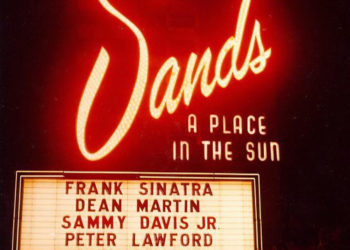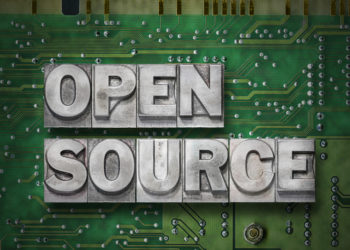MIT is a fascinating place – a hotbed of innovation led by academics, yet not afraid of commercial partnerships. The MIT Knowledge Futures Group (KFG) was launched recently by MIT Press and the MIT Media Lab with what appears to be an intriguing mix of mission and business in mind. I wanted to gain a better understanding of the Knowledge Futures Group on behalf of readers of The Scholarly Kitchen. Here I ask Amy Brand, Director of the MIT Press to tell us more.

Tell our readers a little bit about you, your background, and your role at MIT Press.
I was born and raised in Manhattan and first arrived at MIT in 1985 as a graduate student. I then came back in the ‘90s as an acquisitions editor at the Press, so MIT has been part of my life for a long time. I left Digital Science to become Director of the MIT Press about four years ago. When I was getting my PhD in cognitive science back in the 80s, the MIT Press bookstore was one of the few highlights in this part of East Cambridge known as Kendall Square – hard to imagine today with all the new industry, street life, and construction around this area.
Booklover that I am, I spent lots of time at the Press bookstore while a student, yet never would have envisioned myself as Director of the MIT Press 30 years later. The job is a perfect fit for me, though, because it builds on my experiences beyond publishing in academic science, university administration, and research start-ups. To my mind, running a press worthy of the MIT name today requires a real appreciation for how publishing, technology, and academic careers interact.
What is the Knowledge Futures Group (KFG)?
The MIT Knowledge Futures Group is a new joint venture of the MIT Press and the MIT Media Lab. Its ultimate goal is to help build a more sustainable scholarly publishing ecosystem. As we grow — adding resources, new staff and now new advisors — we’re looking to accelerate the path from research breakthrough to application and societal benefit, developing tools that enrich and fortify our knowledge infrastructure. At the same time, we’re trying to galvanize a real movement towards greater institutional and public investment in that infrastructure, by serving as a model for it and partnering actively with aligned initiatives. It’s worth pointing out that MIT has a strong track record in homegrown knowledge infrastructure. It is, after all, the birthplace of Dspace and Open Courseware.
How did the MIT Press, the MIT Media Lab, and Reid Hoffman come together to form the KFG? What other partners are involved?
I initially met Joi Ito, Director of the Media Lab, at a Sci Foo conference at Google at around the same time I was starting my job as MIT Press Director. I told him about my ongoing work on contributor role tagging – readers may be familiar with Project CRediT – and my ambitions for the MIT Press, and he agreed to join the Press Management Board. This was a real honor, given that Joi’s other board seats include the New York Times, the Knight Foundation, and the Macarthur Foundation. Joi is also a former Chairman of Creative Commons, and we found that we shared a deep interest in re-imagining science communication and knowledge sharing.
He introduced me to a doctoral student in the Media Lab named Travis Rich, who was developing an open source publishing platform called PubPub. We decided to partner on grant applications to build out the platform for select MIT Press book and journal projects. Initial funders included the Sloan Foundation and the Siegel Family Endowment. Reid Hoffman, who supports a number of Media Lab initiatives, initially heard about the Knowledge Futures concept last summer when I presented to the Media Lab Advisory Council. With his generous multi-year commitment, we were then able to launch the KFG in earnest.
What is your philosophy of openness in the academic ecosystem – from research to publication?
I consider myself a “Harnadian” when it comes to open access (OA) – more pro-Green than pro-Gold. Paid open access is a good business model for some publishers, including us, but merely making published content open won’t fix science, when the means to produce, share, and analyze knowledge remain essentially locked down. This includes not only tools but also data.
As someone who runs a non-profit publishing company whose ongoing success is based in no small part on selling books and journals, “openness” for me is less ideology and more reality and practicality. Whatever one’s philosophy of access, almost everything published in digital form ends up open one way or another. OA promises to be a more sustainable business model going forward for scholarly books and journals, especially if implemented in a way that allows publishers to sustain their OA activities over the long term – whether through grant support, subvention, or print sales.
This means that the choice of license needs to be weighed carefully. There are a range of OA business models and licenses work with. Sometimes CC-BY isn’t always the best fit, and sometimes publishers prefer the terms of access to change over time. For books in particular, decisions around open licenses really need to be author-driven. At the MIT Press, we’re thinking hard about which third parties to partner with in the distribution of our OA content. A durable institution-led, pay-it-forward business model for OA books and journals, along with the ability to accrue revenue from print sales, would ensure that we can continue to publish scholarship that’s valued by the research community.
What do you view as the most significant barriers to innovation in an open environment?
Assuming here by “innovation” you mean the growth of both knowledge and tools, the greatest barrier to my mind is dogmatic binary thinking, because it shuts down conversation and therefore slows innovation. We’re currently pursuing open source solutions. But there are some inventors for whom commercialization is the right path forward to grow adoption of their technologies, and there are some researchers for whom sharing all their research data immediately is not practical or desirable. If we agree the goal is to accelerate discovery in science by applying computational power to big data, doing so does not require strictly free access to that data – see, for example, the EU’s FAIR data principles – just as search engines can accelerate discovery by indexing full-text content that isn’t open in the fullest sense.
Does KFG foresee a new path to career success for researchers through innovation and openness?
I would call it an enriched, more flexible, and less bias-prone path. The interaction between publication and academic promotion and tenure is something of a chicken-and-egg problem. Administrators rely on citation-based measures to the extent that they do – and it varies by institution – because that is what is available to them. We need to diversify the signal and give researchers an enriched vocabulary for presenting the impact and broader significance of their published work. Almetrics are a prime example of that – new indicators of attention and influence like course adoption, policy uptake, news coverage, and social media that give researchers a richer way of tracking and documenting the significance of their work. Contributor role tagging is another great example; researchers need to be able to present not only what they authored, but what they contributed to the publications attributed to them, in particular to support younger researchers and those making contributions to data, visualization, or code. A newer example of enriched signalling is the Peer Review Transparency project – a system for signalling rigor that is divorced from journal or publisher brand, as one way to remove disincentives to publish open access.
Does KFG see innovation being overtly integrated into academic institutions, rather than outsourcing to the private sector?
I think all paths here – public, private, society, academic – can and should co-exist. That said, I’m personally betting that the university sponsored approach, with support from institutional networks, will ultimately be the most productive and sustainable path for knowledge sharing ecosystems, not to mention the most trust engendering. University presses are a living example of institutionally endorsed and supported publishing, and a growing source of innovation.
Much of what researchers expect of scholarly publishing today is not happening on a large-scale basis. They expect important research to be more accessible, reproducible, and re-usable. They expect the structure of information to align with the functionality of the web, expanding publishing from an opaque workflow into a more transparent one. They expect to see richer representations of authorship and provenance, and other new ways of gauging the legitimacy of published content. Many in the research community have come to think of academic publishing, especially scientific journals, as a ball-and-chain when it comes to career advancement. Core to this problem is that universities have largely outsourced control over our knowledge ecosystems and how we define and measure research impact. The solution necessarily entails universities reclaiming some of that ground.
While technology has vastly accelerated the pace at which knowledge is created, we are far from harnessing the Web’s true potential to speed discovery in science and other fields of inquiry.
Can you tell us about some of the most exciting projects incubating in the KFG, and how they may shape academic life and publication.
There are a number of affiliated projects, including the Peer Review Transparency project I mentioned earlier; the Prior Art Archive, which allows anyone to upload their prior work to make it easily searchable by patent examiners; a Mellon-funded inventory of open source publishing systems and platforms – in partnership with John Maxwell of Simon Fraser University – which will be distributed openly later this month; and a Media Lab project called Scaling Science being run by doctoral student James Weis.
But the group’s two core projects at the moment are the Underlay – a very early-stage open, distributed knowledge graph with sophisticated provenance functionality – and PubPub, an open source authoring and publishing platform that is already seeing widespread adoption.
PubPub aligns publication with the web – collaborative editing, rich media, annotation, and versioning. It is intended to be used by anyone as a community publishing and discussion platform, and it’s also the Press’s preferred home for open, interactive books, journals, and non-traditional content types. It is genre-neutral, unlike platforms developed specifically for open monographs or open journals. There are hundreds of communities already using the service, including other publishers, (e.g., Goldsmiths Press) and other libraries/universities (e.g., Stanford University and Duke University).
How sustainable is the KFG model?
It’s too early to say since we are still quite a young initiative and we’re just starting to develop our business and partnership models. As we ramp up those efforts, we’ve grown from six staff last summer to 12 today and we recently hired digital business development veteran Heather Staines as our Head of Partnerships. Philanthropic support over the long-term shouldn’t be the only solution. Rather, we’re looking towards a variety of revenue streams within a multi-university consortial framework, by building out an institutional network based on the KFG model we have incubated here at MIT. We’re actively working with early partners to develop sustainable models.
Looking ahead 5 -10 years, what do you see an academic’s life looking like as part of a KFG future?
My hope is that, as a result of the KFG and many like-minded initiatives, access to the knowledge produced at research institutions will be readily available around the world for application to pressing global problems; academics will have more diverse and efficient options for sharing their research and tracking its impact; our processes around peer review – whether for publication, funding, or career advancement – will be more transparent and fair; and readers will be better enabled to gauge the veracity of the information they consume.
Do you have any parting thoughts you would like to leave with the readers of The Scholarly Kitchen?
When Tim Berners-Lee created the World Wide Web, the intention was to allow researchers to share their work. But research communication tools and practices have so far failed to take full advantage of the linking, access, and decentralized authority that the Web enables. While technology has vastly accelerated the pace at which knowledge is created, we are far from harnessing the Web’s true potential to speed discovery in science and other fields of inquiry. The same could be said of other knowledge-based industries, from journalism to trade publishing, law, and beyond. The knowledge creation enterprise – and its ability to stimulate progress in all areas of human endeavor – depends in no small part on how effectively universities and other mission-driven organizations can hasten access to trustworthy information and underlying technologies.


